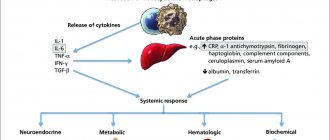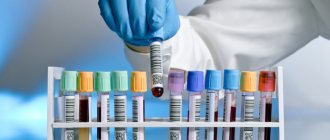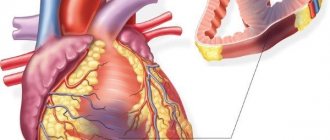Preparing to donate blood
Before donating blood, the donor must undergo a thorough diagnosis and obtain a physician's opinion.
If there are no contraindications, then some restrictions should be observed before undergoing thrombocytopheresis:
- stop taking medications for two weeks;
- do not drink alcoholic beverages for 5-7 days;
- do not smoke for a day;
- Avoid physical activity for 2-3 days and maintain emotional balance;
- good rest.
It is also necessary to pay important attention to nutrition. It must be balanced and contain all the vitamins and minerals necessary for the body. At the same time, the consumption of fried, hot and spicy foods, citrus fruits, and dairy products should be minimized
At the same time, you should minimize the consumption of fried, hot and spicy foods, citrus fruits, and dairy products.
Before donating platelets, you should have a good breakfast. Porridges with bread baked from whole grain flour and buns are ideal, as they contain complex carbohydrates.
Types of pathologies
An increased number of red blood cells in the bloodstream reflects the human body’s ability to adapt to pathologies, which can be very different.
Most often, the symptoms of the disease at the initial stage of erythrocytosis are very mild; only a general blood test (CBC) can make it clear to doctors that some malfunctions are occurring in the body’s functioning.
It is very important to start treatment in a timely manner so that diseases do not develop to an irreversible stage. The norm of red blood cells in the blood is usually taken as the number of cells per liter or microliter of blood - 10¹²/l (µl)
The norm of red blood cells in the blood is usually taken to be the number of cells per liter or microliter of blood - 10¹²/l (µl).
Moreover, depending on the sex of a person, normal concentrations of red blood cells in the bloodstream may deviate from the average values.
Thus, in women the number of red cells averages 3.4-5.2 × 10¹²/l. In men, these figures are slightly higher - 4.3-5.7 × 10¹²/l.
The classification of erythrocytosis has three main forms, each of which has its own underlying cause:
- primary erythrocytosis (or true);
- absolute erythrocytosis (or secondary);
- relative erythrocytosis, which is also called Heisbeck syndrome.
True erythrocytosis is most often caused by inherited blood diseases, so this type of pathology is quite rare.
However, the following diseases can also cause primary erythrocytosis:
- heart disease;
- chronic gastritis;
- chronic obstructive pulmonary disease, most often observed in smokers;
- Oncological neoplasms can be the causes of true erythrocytosis and erythremia (or Vaquez syndrome).
If a person lives high in the mountains, then he may experience symptoms of physiological true erythrocytosis.
Since the oxygen content in the air decreases as the area rises above sea level, there is less of it in the body than it should normally be.
The process of physiological erythrocytosis is quite slow, the blood tests of those people who come to the highlands just to ski for one or two weeks will be normal, but for those who constantly live in conditions of oxygen deficiency, an increased concentration of red blood cells will be observed in the CBC.
Newly born children also experience symptoms of physiological erythrocytosis, since in the fertilized egg the child received oxygen only from the mother’s blood, and there was not very much of it.
Immediately after birth, children have an increased concentration of red blood cells in the CBC, which then, after two to three days, normalizes.
Prevention of pathology
In order for the level of red blood cells to remain normal, it must be constantly monitored. That is, you need to undergo periodic medical examination with laboratory tests. In addition, try to treat various inflammatory and infectious diseases in a timely manner; self-medication is unacceptable.
If the first signs of high hemoglobin levels are noticed, you need to adjust your diet. At the same time, give up bad habits. You may need to take medications that make your blood thinner.
Now you have information on the topic: “Erythrocytosis: what it is, signs and treatment features.” Be healthy.
Red blood cells of living things
Red blood cells are an integral part of the blood not only of humans, but also of all vertebrates and a number of invertebrate creatures.
The nuclear-free design makes the red blood cells of mammals the champions of small size, but in birds, despite the preserved nuclei, the red blood cells are not much larger.
In other vertebrates, red blood cells are larger due to the presence of a nucleus and other constituent elements of the cell.
Normocytes (fully formed mammalian red cells) lack nuclei, intracellular membranes, and most organelles. After the nuclei in the cell primordia fulfill their role, they are forced out of them.
The main constituent element of the red blood cells of all living beings is hemoglobin. Nature has done everything possible to ensure that red blood cells can carry the maximum amount of oxygen.
In most living things, red blood cells are like round discs, but there are exceptions to every rule. In camels and some other animals, the red blood cells are oval.
Video:
https://youtube.com/watch?v=hOugDDzX-sg
The cell membranes of red blood cells also have a special role - they perfectly allow sodium and potassium ions, water and, of course, gases - oxygen and carbon dioxide - to pass through.
Red blood cell membranes owe their permeability to transmembrane proteins glycophorins, which negatively charge their surface.
Outside the membrane there are also so-called agglutinogens - blood group factors, of which over 15 are known today. The most famous of them is the Rh factor.
The functions of red blood cells depend on their number, and it depends on age. A reduced number of red cells is called erythropenia, and an increased number is called erythrocytosis.
Norms of red blood cells depending on age:
| Category | Quantity (million pieces per 1 mm³) |
| Men | 4,5 — 5,5 |
| Women | 3,9 — 4,7 |
| Newborns | Up to 6 |
| Aged people | Up to 4 |
The efficiency of hemoglobin directly depends on the area of contact of the red blood cell.
The fewer red blood cells there are in the bloodstream, the larger the total area of all red blood cells in the body. The red blood cells of lower vertebrates are quite large compared to higher ones.
For example, the diameter of red blood cells in amphiums (a type of amphibian) is 70 microns, and in goats, which are mammals, it is 4 microns.
What is erythrocytosis and why is it dangerous?
In medical practice, erythrocytosis is considered a clear sign of dysfunction of internal organs or systems.
The condition itself is not considered a disease, since it does not threaten human life and health. It is characterized by thickening of the blood. Against this background, the risk of developing blood clots, which are already life-threatening, increases.
Causes of pathology
Erythrocytosis is characterized by several manifestations. Through their detailed analysis, it is possible to establish the reasons that led to the formation of pathology.
The disease develops in a relative and true form. The first is diagnosed if the patient has a large number of red blood cells per unit of blood.
Additionally, a significant decrease in plasma throughput can be recorded. However, the total number of red blood cells remains unchanged.
Relative erythrocytosis occurs in the human body for a number of reasons:
- Due to internal diseases, organs are forced to constantly lose large amounts of fluid. Its norm does not have time to be replenished.
- The patient lives in constant stress.
- The person has a history of hypertensive crises.
- Obesity.
Absolute erythrocytosis occurs due to the following reasons:
- Genetic predisposition leads to the fact that the patient experiences changes at the enzymatic level. They negatively affect the composition of red blood cells, which are necessary for the transport and release of oxygen. Against the background of a lack of this component in each cell, a mechanism is activated to increase the total number of red blood cells.
- Hypoxia causes hemoglobin to increase. For example, a person regularly poisons himself through smoking. The clinical picture is dangerous and can provoke diseases of the upper respiratory tract. The risk of developing heart defects also increases.
- Red blood cells are produced through the action of erythropoietin. This stimulant is produced in large quantities in the presence of pathologies in the kidneys. The situation is observed in a patient in the case of malignant neoplasms.
Types and classification
Depending on the form and nature of the disease, acquired and hereditary erythrocytosis are distinguished. In some medical publications it is also called primary and secondary.
The disease can develop in men and women. However, the degrees of its manifestation differ radically between them.
Secondary erythrocytosis develops against the background of the presence of somatic diseases in the human body. The clinical picture directly depends on the individual characteristics of the body .
Using a hemogram, it is possible to thoroughly analyze the pathological condition. Red blood cell counts may increase significantly or moderately. At the same time, all its other components are within normal limits.
It is possible to understand what it is only through all the necessary tests. If there are no obvious signs of this form of pathology, then the family nature of the disease is checked.
Primary erythrocytosis can only be diagnosed in a child. The pathology is easy to recognize by the following features:
- The complexion has a characteristic reddish tint.
- Even the initial stage is characterized by a significant increase in the number of red blood cells in the blood. Hemoglobin and hematocrit are also not normal.
- White blood cells and platelets are on the verge of increasing.
- The vessels are overcrowded, so the blood is characterized by excessive viscosity.
- Reduced speed of blood movement through the vessels.
Treatment should be carried out promptly in women, men and children. Otherwise, the risk of vascular complications increases. Against this background, blood clots may form in them.
Symptoms
The manifestation of the disease directly depends on the stage of its development. Symptomatic erythrocytosis at the first stage of development is characterized by the following:
- Panmyelosis can be detected in the bone marrow.
- There are completely no complications in the vessels.
The duration of this stage is difficult to determine unambiguously. A person may not be aware of the problem of red blood cell formation for several years.
https://www.youtube.com/watch?v=Vwq9FAO9C04
At the progressive stage of the disease, the patient already exhibits other symptoms:
- Plethora has a brighter character.
- The formation of blood clots is recurrent.
- The body suffers due to constant exhaustion.
- A noticeable increase in basophils.
- A detailed analysis of blood serum can reveal a high content of uric acid in it.
At this stage, as a rule, the systemic nature of the manifestation of the disease is diagnosed.
Partial exhaustion of the body is observed at the anemic stage. Additionally, it is characterized by:
- Significant increase in the size of the liver and spleen.
- Pancytopenia.
- With a detailed study of the red bone marrow, lesions can be detected.
False and true erythrocytosis is characterized by the following manifestations:
- Cyanosis.
- The patient often feels dizzy. This may result in fainting.
- Severe pain in the head.
- Periodic occurrence of nosebleeds.
- Complications due to thrombosis.
Diagnostics
Even with a detailed analysis of symptoms, an accurate diagnosis is impossible. To determine the pathology, an analysis is required. The doctor spends a lot of time figuring out why red blood cells are produced in large quantities. A comprehensive examination is required.
A general blood test is prescribed. The key indicator is the number of red blood cells. A full range of diagnostic measures includes laboratory and instrumental examination.
If the norm is not established, then the patient then needs to undergo differential diagnosis.
Features of therapy
Treatment of the disease is carried out in order to eliminate excess red blood cells, which can increase blood viscosity several times. Therapy for adults and children is different. The general goal is to prevent the development of diseases of the respiratory system, heart and blood vessels. For this purpose, special medications are used.
If the disease is caused by a lack of oxygen, then it is recommended to focus efforts on restoring its normal amount. Shunts in blood vessels can only be eliminated through surgery.
Clinical recommendations contain a clause on mandatory smoking cessation.
If the patient has increased body weight, then he needs to continue to adhere to a special diet.
The chronic form of the disease is eliminated through the method of bleeding. The course of procedures is prescribed by the doctor depending on the individual characteristics of the patient’s body.
Treatment of the disease in children involves the use of cytostatic drugs. To improve the functioning of the immune system, it is additionally recommended to take vitamins. The prognosis and duration of the course directly depend on the general condition of the patient and the presence of complications.
Nutritional features and diet
Proper nutrition is the key to maintaining health into old age. With erythrocytosis, patients must take into account the characteristics of their illness.
They are prescribed a special diet:
- Foods high in vitamin K are completely excluded from the diet. This component accelerates blood clotting and can lead to negative consequences. Among the dangerous foods, spinach and lettuce should be noted. Vegetables are considered healthy, but if you have erythrocytosis, you should avoid them.
- Doctors recommend constantly eating foods high in iodine. It is found in sufficient quantities in seaweed and seafood. Thanks to them, it will be possible to significantly reduce blood viscosity.
- Nuts should be used as a natural remedy to normalize blood pressure.
- Fish oil has a positive effect on the body. Thanks to it, it is possible to achieve the resorption of plaques and blood clots that have already formed in the circulatory system.
- Fruits and vegetables high in folic acid have a positive effect on the body. Tomatoes, garlic and red peppers are rich in it.
- To reduce blood viscosity, it is recommended to use wheat grains.
Military service with erythrocytosis
With this disease of unknown origin, the guy will be given a deferment for a period of 6 to 12 months.
If the reasons for the negative state are already known, then the decision is made based on them. However, most often the army and this disease are incompatible.
Erythrocytosis is a serious pathology that is diagnosed in the case of excessive levels of red blood cells and hemoglobin in the blood. Against this background, blood viscosity increases.
The situation is dangerous because it leads to disruption of oxygen metabolism inside the cell. The consequences may be irreversible. Timely medical assistance will help to avoid the situation developing in a negative way . The doctor directs all his efforts to identify the cause and eliminate it.
Today, there is a wide range of medications that can significantly reduce the viscosity of a patient’s blood. You can choose them correctly only based on the test results.
Source: https://prososud.ru/krovosnabzhenie/eritrocitoz.html
What causes the development of erythrocytosis
General dehydration
Each type of erythrocytosis has its own causes of development. In another way, relative erythrocytosis is also called hemoconcentration, resulting from a lack of fluid in the body. That is, there is not enough plasma volume, and the blood becomes more concentrated. This condition can occur with increased sweating, dehydration, poisoning and the development of vomiting, diarrhea, and burns.
Innate red blood cells
In congenital erythrocytosis, the disease is transmitted from parents according to an autosomal recessive trait. Hemoglobin has difficulty delivering oxygen to tissues, which provokes the development of hypoxia. As a compensatory mechanism, increased synthesis of red blood cells occurs.
Diseases that provoke the development of erythrocytosis
Diseases can lead to increased production of red blood cells when there is a lack of oxygen or increased production of erythropoietin, a hormone that stimulates the development of red blood cells in the bone marrow.
Diseases that can lead to erythrocytosis:
- With increased oxygen consumption during various reactions, for example, with disorders of the endocrine system (thyrotoxicosis).
- Hormone-secreting tumors, for example, kidneys, pituitary glands, promote the release of substances that enhance the production of red blood cells. This is possible with pheochromocytoma and ovarian tumors.
- If there is a lack of oxygen saturation of hemoglobin in the lungs - bronchitis, pleurisy, asthma, tuberculosis, emphysema.
- With insufficient blood circulation through the vessels, circulatory hypoxia occurs, which can develop as a result of heart disease or heart attack.
Hypervitaminosis of vitamin B 12, which is involved in the synthesis of new blood cells, can also lead to erythrocytosis.
External factors
Erythrocytosis can be provoked by smoking, increased physical activity, stressful situations, carbon monoxide poisoning, which results in the formation of a pathological form (carboxyhemoglobin).
Types of disease
Erythrocytosis, the causes of this problem can be completely different, can be classified as follows:
- Pathological. Its peculiarity is that it appears as a result of any problems with the kidneys or abnormal functionality of the bone marrow. It should be noted that this process is not benign. Therefore, it must be dealt with immediately.
- Physiological. The cause of this condition may be a prolonged lack of oxygen. In this case, the body needs to compensate for its amount by increasing the total number of red blood cells. This process is not life-threatening, as it passes quickly enough when normal living conditions are resumed. This condition can occur in newborns for several days.
- Relative. It can develop due to any major loss of blood, prolonged vomiting, severe diarrhea.
- Primary. This pathological condition develops due to genetic disorders. That is, it is diagnosed from birth and accompanies a person throughout his life. The pathology lies in the fact that red blood cells transfer oxygen to tissues very poorly and difficultly. This can lead to stable hypoxia of the body.
- Secondary erythrocytosis. It is already a manifestation of some disease in the body. You can get rid of it only by curing the underlying pathologies.
Signs and symptoms
Symptoms and signs of the most severe type of erythrocytosis, erythremia, are quite characteristic, but do not appear immediately. Usually, at the onset of the disease, only erythrocytosis is visible, and due to thickening of the blood, patients experience high blood pressure, cyanosis of the fingers and toes, itching of the skin after washing, pain and loss of sensitivity in the fingertips. Blood thickening leads to impaired microcirculation.
At the second stage, patients with Vaquez disease already have other laboratory phenomena: high leukocytosis due to neutrophils and a shift of the formula to the left. Under normal conditions, such production of leukocytes is characteristic of acute infectious diseases with very high temperatures. In this case, the body is clear, and the red bone marrow throws all its reserves into fighting the infection. And here he just can't stop
It is important that this is not “blood cancer” or leukemia. With leukemia, a huge number of immature blasts are produced, which are of no use, only harm
And here, while the bone marrow is working hard, it just produces a lot of normal cells.
Then the platelet count increases, and the spleen, which is a lymphoproliferative organ and must destroy all this excess blood cells, works under extremely great stress, and, in the end, its structure is disrupted.
Blood viscosity is high, blood flow slows down. Various thromboses occur, ischemia of organs and tissues develops, and these are all elderly people. Patients have a very high risk of ischemic strokes, heart attacks, and thrombosis of the intestinal mesenteric vessels. About 30% of patients with erythremia die from venous thrombosis.
The condition is aggravated by the occurrence of hemorrhagic bleeding: from the nose, after tooth extraction. Bleeding from a gastric ulcer in these patients is life-threatening. They may ask: Why the bleeding? After all, we are talking about the opposite – about thrombosis? The insidiousness of erythremia is that thrombosis occurs inside the vessels from blood thickening, and during bleeding, when the hemostasis mechanism is triggered, this density prevents the normal retraction of the blood clot.
Towards the end of this stage, so-called myeloid metaplasia of the spleen is added. It simply cannot process such an extra volume of blood cells, and cannot serve as a cemetery for red blood cells. Simply put, she refuses to work. The spleen is enlarged, its functional tissue is replaced by connective tissue, and fibrosis occurs.
Finally, the bone marrow can no longer cope with the excessive production of blood cells. It is replaced by the same scar tissue, and ceases to produce even the normal number of cells. Anemia develops, the platelet count drops, and hemorrhagic syndrome develops in full. These are the symptoms of erythrocytosis, which are most dramatic and unfold precisely with erythremia.
Finally, after a long and many-year period of such perverted activity and excessive stress, the bone marrow, in addition to its complete devastation, may begin to produce immature blood cells and the patient will be diagnosed with acute myeloid leukemia. That is, the outcome of erythremia can be not only myelodysplastic syndrome, but also leukemia, or blood cancer.
Pathological picture
The anatomical substrate of the disease is total hyperplasia of all cellular elements of the bone marrow (myelokaryocytes). In the diaphyses of long bones, the transformation of fatty bone marrow into red is observed. Foci of myeloid tissue are sometimes found in the splenic pulp, liver, and other organs. Perivascular nodules of myeloid cells that react to oxidase are even found in the skin (as in leukemia). Noteworthy is the enormous hyperplasia of the megakaryocytic apparatus; in the capillaries of various organs, most often in the lungs, emboli consisting of megakaryocytes are found.
Hyperplasia of erythroblasts in the bone marrow does not differ from the usual type of regeneration.
In the case of myeloid leukemia, cell maturation is not impaired for a long time, and almost exclusively mature forms of leukocytes enter the blood.
In the outcome phase of erythremia, fibrous or osteosclerotic transformation of the bone marrow may be detected; and other cases, changes characteristic of acute or chronic myeloid leukemia occur.
The spleen shows plethora and scars after heart attacks. The follicular structure is not disturbed for a long time. With long-standing erythremia, hyperplasia of reticular cells and foci of myeloid metaplasia with the presence of megakaryocytes are noted. The detection rate of myeloid metaplasia increases in the outcome phase. One or another degree of splenic fibrosis is often detected.
In the liver, there is pronounced congestion, hyperplasia of Kupffer cells and perivascular proliferation of connective tissue, reaching in isolated cases the degree of complete cirrhosis. With a long history of the disease, foci of myeloid metaplasia are found, as in the spleen.
The pancreas is often cirrhotic.
There is plethora (especially venous) of all internal organs; From each cut blood flows “like from a key.” Peripheral and visceral vessels, mainly venous capillaries, are sharply overflowing with blood. A common finding is vascular blood clots or scars in organs after heart attacks and vascular thrombosis. When erythremia is combined with hypertension, significant left ventricular hypertrophy, arteriolosclerosis and vascular hyalinosis in the kidneys are detected.
Erythremia causes
Despite the fact that erythremia has been known for almost a century and a half, it is still poorly studied, and the reliable causes of its occurrence are unknown.
Erythremia ICD (international classification of diseases) – D45. Some researchers have concluded during epidemiological monitoring that erythremia has a relationship with transformation processes in stem cells. They observed a mutation in a tyrosine kinase (JAK2) in which phenylalanine replaced valine at position six hundred and seventeen. This anomaly is a companion to many blood diseases, but with erythremia it occurs especially often.
It is believed that there is a family predisposition to the disease. So, if close relatives have erythremia, the chance of getting this disease in the future increases. There are also some patterns in the occurrence of this pathology. Erythremia mainly affects people aged (sixty to eighty years), but there are still isolated cases when it develops in children and young people. In young patients, erythremia is very severe. Men are one and a half times more likely to suffer from the disease, but among rare cases of morbidity among young people, the female gender predominates.
Among all blood pathologies accompanied by myeloproliferation, erythremia is the most common chronic disease. Out of one hundred thousand people, twenty-nine people suffer from polycythemia vera.
So, the diagnosis has been established. What next?
And then the patient awaits treatment in the hematology department, where the tactics are determined by clinical manifestations, hematological parameters and the stage of the disease. Treatment measures for erythremia usually include:
Bloodletting, which reduces the number of red blood cells to 4.5-5.0 x 1012/l and Hb (hemoglobin) to 150 g/l. To do this, 500 ml of blood is taken at intervals of 1-2 days until the number of red blood cells and Hb drops
Hematologists sometimes replace the bloodletting procedure with erythrocytopheresis, when, after collection by centrifugation or separation, red blood is separated and the plasma is returned to the patient; Cytostatic therapy (myelosan, imifos, hydroxyurea, hydroxyurea);
Antiplatelet agents (aspirin, dipyridamole), which, however, require caution in use. Thus, acetylsalicylic acid can enhance the manifestation of hemorrhagic syndrome and cause internal bleeding if the patient has a stomach or duodenal ulcer; Interferon-α2b, successfully used with cytostatics and increasing their effectiveness.
The treatment regimen for erythremia is prescribed by the doctor individually for each case, so our task is only to briefly introduce the reader to the drugs used to treat Vaquez disease.
Symptoms of high levels of red blood cells in the blood
Signs of the presence of the disease may not be noticeable to a person. Only a blood test specialist can make an accurate diagnosis.
The disease progresses, and the patient most often experiences symptoms of erythrocytosis. First of all, with cuts and any other damage to the skin, the blood is more viscous than that of a healthy person; it does not flow out.
The patient may experience frequent dizziness, sometimes accompanied by fainting, migraines and unbearable headaches.
The skin becomes bright red, which is especially noticeable on the patient's face, but in a supine position the skin may acquire a bluish tint.
Occasionally the nose bleeds. Fatigue appears, makes you sleepy all the time and aches your bones. This occurs due to low oxygen levels in the body.
The patient becomes emotionally unstable: too sentimental, tearful. The functioning of the organs of vision and hearing deteriorates and pain in the heart appears, reminiscent of angina pectoris.
With Vaquez's disease, skin itching appears after water procedures.
Treatment
Since the treatment of erythremia is the standard of complete therapy for erythrocytosis, let’s dwell on it a little
It is very important to prevent thrombosis and ischemic conditions as early as possible. It is imperative to give the patient aspirin in a sufficiently high dose to prevent microcirculatory disorders
Curantil, pentoxifylline and Trental are indicated.
To reduce the amount of blood and to reduce its density, bloodletting is periodically performed. Vaquez's disease is one of the few where medieval techniques bring true relief. But bloodletting is not recommended if the hematocrit does not exceed 0.54. But when it reaches this mark, and the amount of cellular composition of the blood exceeds the liquid part, they are performed.
After bloodletting, the patient is injected with a similar amount of isotonic sodium chloride solution, that is, basic blood thinning occurs. However, it should be remembered that in addition to excess red blood cells and other blood cells, the patient loses iron during bloodletting, and this must be corrected. To do this, the total iron-binding capacity of the serum is controlled, iron, ferritin and transferrin are taken.
For the purpose of pathogenetic treatment of Vaquez disease, immune drugs are used: alpha interferon, hydroxyurea, and other agents. All of these medications significantly reduce bone marrow activity. Unfortunately, the last stage of erythremia does not currently have effective treatment methods, when anemia already develops or leukemia occurs.
Prognosis for severe erythrocytosis - Vaquez disease
If we talk about the prognosis of erythremia, as a representative of severe true, absolute erythrocytosis, then we can still call it favorable if treatment is started in the early stages and continues continuously. What does a favorable prognosis mean? Once diagnosed early, 65% of patients survive the next 10 years.
These numbers may seem terrible to some, but it should be remembered that polycythemia vera is not detected at a young age, but usually after 60 years. And with proper treatment, the patient may well live to an average life expectancy. Of course, vascular thrombosis in old age in patients over 60 years of age is the main danger in this serious illness, which began with such an innocent phenomenon as “a lot of red blood cells.”
Normal red blood cell count
The production of red blood cells occurs in the red bone marrow. This process is called erythropoiesis and occurs in several stages. The main purpose of these cells is to transport oxygen and the product of the respiratory process - carbon dioxide. This is caused by hemoglobin contained in red blood cells. However, this is not the only thing that cells are intended for; in addition to ensuring tissue respiration, red blood cells perform the following functions:
- Nutritious. Red blood cells carry amino acids from the digestive system to other tissues of the body.
- Enzymatic. Enzymatic reactions are carried out with the participation of red blood cells due to the fact that enzymes can attach to the surface of the cells.
- Protective. Antigens and toxins can also be attached to the surface of red blood cells, causing them to become inactive in human blood. In addition, immune and autoimmune reactions in the body occur with their participation.
- Regulatory. The acid-base balance in the body is maintained by red blood cells.
The variety of functions performed by red blood cells explains how important it is for the health of the body that the number of red blood cells in the blood is normal. For adult men, the norm is 4-5.5 trillion/l
For women the norm is slightly lower, for children the normal value fluctuates. The norm is determined depending on age and gender factors.
Diagnosis
The diagnosis is established on the basis of anamnesis, clinical picture, hemogram results (see), histological examination of the bone marrow. To identify abnormal hemoglobin with increased affinity for oxygen and deficiency of 2,3-diphosphoglycerate, the oxygen dissociation curve and blood P50 are determined (see Hemoglobin). Abnormal hemoglobin can be detected using electrophoresis (see). Differential diagnosis is carried out with polycythemia, usually observed at the age of 55-60 years, which is characterized by severe splenomegaly, leukocytosis, thrombocytosis and three-line hyperplasia of the bone marrow (see Polycythemia), and with secondary erythrocytosis (see), the clinical picture of which is determined by the underlying disease .
Contraindications
Contraindications to erythrocytepheresis are divided into absolute and relative. The first category includes:
- open areas of bleeding or increased risk of their occurrence;
- purulent-septic processes in the body;
- allergic reactions to components used during the procedure.
Relative contraindications include diseases and conditions in which the procedure can be performed after some time or under strict medical supervision:
- cardiovascular pathologies in the stage of decompensation;
- infectious diseases or exacerbations of chronic diseases;
- decreased hemoglobin and protein levels;
- thrombophlebitis;
- decreased blood pressure;
- blood clotting disorder;
- narrowing of the lumen of the veins;
- alcohol or drug intoxication and their consequences (withdrawal syndrome);
- mental illness;
- menstruation and pregnancy.
Treatment of erythrocytosis
The main goal of treating erythrocytosis is to remove excess, excessive red blood cells by reducing the degree of blood viscosity. In therapy, a complex of methods using drugs is used. If erythrocytosis is associated with diseases of the respiratory or cardiovascular system, then the underlying disease is treated first. The main rule in the fight against erythrocytosis is to eliminate the cause of the pathological condition.
Hypoxic erythrocytosis requires therapeutic measures using oxygen. Vascular bypasses are treated with surgery.
For smoking patients, the first and main recommendation is to quit the addiction. Excess body weight is eliminated through a strict diet.
In exceptional cases, when it is impossible to establish the root cause of erythrocytosis, an assessment of the real threat and the likelihood of developing undesirable consequences and complications is necessary.
A common treatment method is bloodletting.
However, it requires caution in diseases such as chronic pulmonary obstruction and heart defects of various origins. Such diseases associated with erythrocytosis allow the use of bloodletting techniques
The blood volume during such procedures should not exceed 200 ml weekly with a hematocrit of at least 50%. A hematocrit of 50 to 60% is a relative indication for phlebotomy, and a barrier of 60% is a clear indication for such a procedure.
For erythrocytosis of any kind, therapy using cytostatic drugs is not carried out. Treatment also excludes taking vitamin complexes. The prognosis for the development of the pathological condition and complete recovery depends on the underlying disease.
A clinical blood test allows you to determine many different indicators, including developing erythrocytosis. An experienced doctor will be able to assess the condition of the hematopoietic organs and the functioning of the organs and systems of the human body based on the results of this analysis. Competent and timely treatment will allow you to avoid serious complications and establish the normal functioning of the circulatory system.
Author of the article:
Education: In 2013, he graduated from Kursk State Medical University and received a diploma in General Medicine. After 2 years, he completed his residency in the specialty “Oncology”. In 2020, she completed postgraduate studies at the National Medical and Surgical Center named after N. I. Pirogov.
‹
7 body odors that indicate illness
5 best products for male power!
›
Erythrocytosis - diagnosis
In order to clarify the cause of plethora, ultrasound diagnostics of internal organs, x-rays of the lungs, and examination of the cardiovascular system are performed. If a predisposition to the formation of blood clots is detected, consultation with a specialist is necessary. After the patient contacts the clinic, the doctor prescribes a series of laboratory and instrumental tests. Among the first is a biochemical blood test. The diagnosis of “erythrocytosis” is confirmed if the level of red blood cells in the blood serum of women is 6.5-7.5 × 1012/l.
Other indicators are also taken into account:
- increase in hemoglobin over 140 g/l;
- increase in the number of leukocytes and platelets.
True erythrocytosis, why they
It should be recalled that the number of red blood cells in the body depends on a special hormone, or erythropoietin. It is produced in the kidneys, and the liver, spleen and heart take part in its regulation. Erythropoietin affects the red bone marrow and causes it to produce more red blood cells. When the oxygen pressure in the tissues decreases in the kidneys, hypoxia occurs, and after this the kidneys begin to intensively produce erythropoietin, giving a signal to the red bone marrow to increase production.
We already know that absolute erythrocytosis can be congenital due to hereditary anomalies, and acquired. Let us list some of the most common causes of true erythrocytosis, in which the production of erythropoietin, a stimulator of erythropoiesis, or the synthesis of red blood cells, takes part:
- Chronic hypoxia (for example, chronic respiratory failure due to lung diseases);
- Various heart diseases;
- Long history of smoking;
- Carbon monoxide poisoning;
- Various tumors that secrete erythropoietin;
- Congenital heart defects, which cardiologists call “blue”, occur with diffuse cyanosis. This is the cause of erythrocytosis in children;
- Anomalies and stenosis of the renal artery.
All of these conditions lead to increased production of erythropoietin as the kidneys are starved of oxygen. This is all secondary erythrocytosis, since at first there was renal hypoxia, and then this blood reaction developed. All of these are symptomatic erythrocytosis, since here the blood reaction is a symptom of some other disease.
Clinical picture
The severity of clinical symptoms varies and depends on the type of inheritance. With an autosomal dominant type of inheritance, the disease is usually asymptomatic. Clinical manifestations are most pronounced with the autosomal recessive type of inheritance, to which the Chuvash type belongs. This hereditary familial erythrocytosis is detected mainly in childhood and adolescence. The main symptoms are caused by plethora (see), increased blood viscosity, microcirculation disorders (see). The most common complaints are headache, fatigue, pain in the lower extremities and in the heart area. All patients have red cyanosis; a number of patients have moderate hepatomegaly, splenomegaly, and symptoms of “drumsticks” and “watch glasses.” The most common complications are cerebral thrombosis and capillary bleeding.
There is a significant increase in hemoglobin content and the number of red blood cells in the blood. The hematocrit number (see) in some patients can reach 90% (the so-called hard blood syndrome). Blood viscosity usually exceeds 8.0. ROE is sharply slowed down and is often not recorded.
Trepanobiopsy of the ilium reveals hyperplasia of the erythroid lineage of hematopoiesis, elements of bone tissue restructuring with increased bone resorption and osteoblastic reaction, as well as focal growths of fibrous substances against the background of massive microcirculation disorders.
Features of pathology in men and children
The reasons for the development of this condition in men are the consumption of too much folic acid and vitamin B12. They enter the body with food. In addition, uncontrolled use of multivitamins can worsen the situation.
Symptoms of the condition in men include pale skin, visual disturbances, problems with appetite, and problems with the functioning of the genitourinary system. In this case, the patient’s blood becomes very thick and viscous. This is dangerous because blood clots can occur, leading to strokes and heart attacks.
Hemoglobin levels that are too high must be reduced immediately. For this purpose, medications and a special diet can be used. It involves excluding foods such as red meat, cereals, red berries and fruits from the diet. In some cases, electrophoresis is used. It can be prescribed only when traditional therapy has not given a positive result.
If elevated red blood cells are detected in a child, you should immediately contact your pediatrician. It will help you understand what could trigger the development of processes. Most often, primary erythrocytosis is diagnosed in children. However, it is extremely rare. Most often, erythrocytosis in children can be triggered by illness of the mother during pregnancy or a violation of intrauterine development. Treatment should only be prescribed by a hematologist.
It should be noted that elevated red blood cells in a child can lead to stroke even at an early age. If this happens, then the baby needs complex, serious and long-term therapy that will help restore the functionality of the body system. If a child is diagnosed with congenital erythrocytosis, you may have to treat it all the time.
Diagnostic features
Erythrocytosis is observed in men, women and even children. However, age does not always matter. In any case, the pathological condition must be correctly diagnosed so that it can be quickly dealt with. The following diagnostic methods exist:
- Ultrasound examination of the kidneys, heart and blood vessels.
- Intravenous pyelography.
- Study of blood gas composition.
- Complete blood test, which will show the level of red blood cells.
- Study of hemoglobin and hematocrit levels.
In addition, the doctor should find out the number of platelets and white blood cells. This will help establish the disease that provoked the presented condition.
Types of erythrocytosis
Red blood cells in the blood can be elevated for several reasons, and the method of treatment depends on the accuracy of the diagnosis.
Absolute erythrocytosis
Occurs with increased production of red blood cells and is divided into 2 types:
- Primary erythrocytosis. It is quite rare and is a hereditary disease. The reason for its occurrence is considered to be the low susceptibility of the oxygen receptors of the kidneys, as well as the high level of the hormone erythropoietin. Symptoms of this type are considered to be loss of strength, dizziness, purple discoloration of the skin and mucous membranes, and decreased blood clotting.
- Secondary erythrocytosis. Unlike the previous one, this type is a consequence of acquired diseases. Its cause is oxygen starvation of cells, which is caused by disease of the respiratory organs, the development of tumors in the liver and kidneys.
For treatment of primary erythrocytosis to be successful, the main cause must be eliminated. First of all, you need to get rid of bad habits such as overeating and smoking. Next, you should undergo a course of oxygen therapy, the purpose of which is to increase the level of oxygen in the blood and, accordingly, reduce the number of red blood cells produced.
With secondary erythrocytosis, bloodletting is often used, which removes excess red blood cells, thereby reducing blood viscosity.
Relative erythrocytosis
If red blood cells are elevated with relative erythrocytosis, this is due to a lack of water in the body, plasma entering the space between the cells, the use of diuretics and laxatives, vomiting, and diarrhea.
To treat this type, you should immediately stop using medications that remove fluid from the body and start drinking more water (1 to 2 liters per day). In severe cases, bloodletting may be necessary to prevent blood clots.
Physiological erythrocytosis
The increase in the number of red blood cells in this case is caused by external factors, such as living in a mountainous area. Also, elevated levels of red blood cells are often found in climbers during competitions and training, as well as in athletes who use supplements containing erythropoietin.
Treatment uses hirudotherapy or bloodletting followed by the introduction of saline solution. A course of these measures can bring the level of red blood cells back to normal.
Pathological erythrocytosis
This type occurs with kidney tumors and erythremia, one of the types of acute leukemia. Removing the tumor in this case is the only sure way to get rid of the problem.
Primary erythrocytosis
If symptomatic erythrocytosis (secondary) is only a symptom of another pathology, which determines the cause, signs and treatment tactics, then the primary increase in red blood cells is a separate independent disease with its own specific causes and clinical manifestations, so it makes sense to learn a little more about it.
Vaquez disease
The most common cause of primary absolute erythrocytosis is Vaquez's disease, or polycythemia. This disease is classified as a chronic tumor pathology of bone marrow tissue, accompanied by excessive proliferation of cells of all three hematopoietic lineages - erythrocytes, platelets and leukocytes, an increase in the volume of circulating blood and an enlargement of the spleen.
Elderly people are susceptible to erythrocytosis; in men, the pathology is diagnosed somewhat more often. Despite the relative rarity of the disease (about 5 cases per million population per year), attention to the problem is associated with a high probability of thrombosis, bleeding in patients, as well as the risk of converting polycythemia into acute leukemia.
Among the causes of Vaquez disease are:
- Spontaneous mutations in stem cells that give rise to abnormal clones of blood cells that do not respond to the action of erythropoietin;
- Heredity - among Jews, for example, family cases of pathology have been noted.
Clones of abnormal red blood cells that mature in the bone marrow exist independently, multiply uncontrollably, since they are not affected by erythropoietin, and they are considered the main substrate of erythremia.
Absolute erythrocytosis in Vaquez disease contributes to changes in blood viscosity (thickening), blood clotting, as well as disruption of the structure and size of the liver and spleen. Patients with thick blood are prone to thrombosis; hypoxia and blood stagnation develop in the tissues. Tension of the red bone marrow ultimately leads to depletion of its function, depletion of structure and fibrosis.
True erythrocytosis develops slowly, does not produce any symptoms in the first stages and can be diagnosed by chance. The first symptoms of erythremia are:
- Heaviness and noise in the head;
- Dizziness;
- Vision disorders;
- Coldness of the skin of the extremities;
- Sleep disorders.
These symptoms simulate many other diseases, in particular arterial hypertension, and therefore can remain without proper attention for a long time, especially in older people. As the volume of circulating blood and the number of cells in it increase, symptoms of congestion appear:
- Red coloration of the skin, especially exposed parts of the body;
- Dilated capillaries and pinpoint hemorrhages in the skin;
- Redness of the sclera due to dilated blood vessels;
- Blueness of the soft palate with the usual color of the hard palate;
- Itchy skin;
- Redness, soreness and burning of fingertips.
In the advanced stage of the disease, patients suffer from intense headaches, pain in the bones, heart, increased blood pressure, bleeding gums, and skin bruises. Upon examination, an enlarged spleen is revealed, and less often, the liver. An increase in viscosity due to erythrocytosis contributes to microthromb formation and trophic disorders in the skin and mucous membranes of the digestive tract.
Complications include thrombosis of cerebral arteries and strokes, heart attack, pulmonary embolism, bleeding from the stomach or intestines. In the blood of patients with primary erythremia, erythrocytosis and increased hemoglobin are detected, as well as an increase in the number of leukocytes and platelets, which is not always observed with secondary erythrocytosis.










